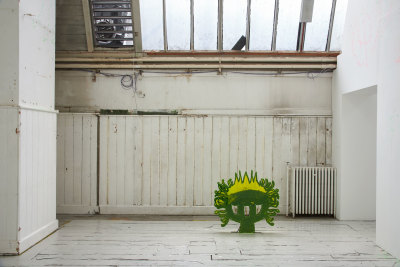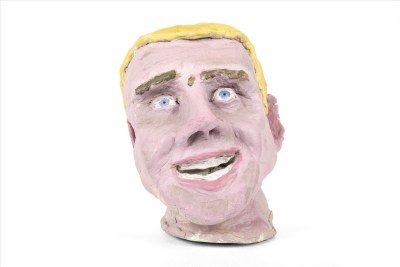Rebecca Salter PRA: “Do not tell young people they can’t do things”
Rebecca Salter PRA: “Do not tell young people they can’t do things”
As I see it
By Sandra MacKenzie
Published 10 December 2019
Meet Rebecca Salter PRA – the first female President in the RA’s 251-year history. Speaking in 2017 upon her election as Keeper of our Schools, she talks art and the next generation, trying a new culture and swimming in the winter.
-
This article was originally published in October 2017.
Elected in December 2019, Rebecca Salter PRA is the 27th President – and the first female President – of the Royal Academy of Arts. In December 2017, she was elected Keeper of the Royal Academy Schools, succeeding Eileen Cooper RA as the artist responsible for our art school. She began her studies at Bristol Polytechnic, before spending six years studying and practicing art in Kyoto, Japan. She is a practising painter and printmaker.
I swim outdoors every day, all year round.
There’s an outdoor pool near where I live – they do heat it in the winter. It’s addictive, actually.
It’s good if people get angry about politics,
particularly young people. I think it’s very important that we’re aware of what we have and what we might lose. But it’s the quality of debate that’s going to make the difference. The world is changing, as is the Royal Academy, and I think we all want to change in an intelligent way and debate this intelligently.
-
-

My teachers said “you’ll never get into art school.”
“You’re not good enough.” I was at a very academic girls’ grammar school and they made me apply to universities to do history of art instead. At my first interview, the interviewer looked at me and said, “Hmm. Are you sure you want to do art history?” I said that actually I didn’t, I wanted to go to art school, and he said, “If I were you, I would.” And that was it! I’m eternally grateful to him.
I told my old school when I was elected an RA. There’s nobody still there from my time, but I just thought I’d put down a marker – do not tell young people they can’t do things.
Whatever I do, it takes a long time to do it.
My work is incredibly detailed, obsessive really, and there’s a correlation between the time it takes for me to make works and time it takes people to look at them. There’s a term in Japanese: “your eyes sit”. It means that you stop actively looking – the muscles in your eyes relax, you start seeing things in a much more receptive way because you’re not as active in the way that you’re looking. So that’s what I want people to do.
-
-
I can just throw myself off a cliff and see what happens.
I knew as a student I wanted to go to Japan, but in those days I might just as well have said I was going to the moon. It was so difficult to get there. Then I turned up at the university in Kyoto and as a foreign student they completely ignored me for the first six months. For some bizarre reason I knew immediately that however difficult it was going to be, there was something about the place that I loved.
It’s easy to take your English life everywhere with you today.
When I was in Japan in the ’70s and ’80s, I had absolutely no option. If I wanted to watch television, it had to be in Japanese, and so you learn. And that is so hard to do now. The inability to leave your own culture behind is a real problem.
-
-

You can work in a telephone box
if you really, really want to make art. The key to a studio is whether you really want to work or not. Obviously it’s better if you can have your own space and lock the door and all the rest of it, but if you’re really determined, you can work in the tiniest space. There’s always something you can do.
I left Japan to avoid living in a bubble.
However good your Japanese is, you are obviously a foreigner. I found that I was being given extraordinary opportunities, but there was always this nagging feeling inside: “have they given me this opportunity because my work deserves it, or is it because it’s a bit more glamorous to have a foreigner?” and that’s quite undermining, in the end. I thought it was time to go home and be part of the crowd again, although it was far harder to come back than it was to go. I arrived back in London and had to start from scratch.
To some extent the art world is still a western construct.
I realised in Japan quite profoundly how eurocentric my education had been. I turned up and they were all studying the European art historian E. H. Gombrich, in Japanese. They knew about western art history completely. Studying with Japanese art students I realised how much more difficult it was for them to envisage their future in an art world where the whole history is somebody else’s.
-
-
I can’t listen to music when I work.
So many of the marks I make have got a sort of rhythm to them, and if you start listening to Mozart or something else it gets in the way. I either listen to Radio 4 or nothing at all.
There is a terrible rate of attrition among artists.
If you ask any one of us, we all know people who’ve fallen by the wayside. You just think, how on earth did I manage to keep working and it happened to me and it didn’t happen for them? It is the hugest honour.
Every generation of artists has to make something for themselves.
There is way more interest in contemporary art now than when I graduated. But of course, when I graduated you could find a derelict warehouse building in East London. This generation is entering a very different world. We needed to be in a freezing cold building with people who thought the way that we did, whereas now, you can find people online. It may be that bricks and mortar are not such an important thing.
If the RA Schools is still here in 250 years time, I’d still like it to be free.
I’d still like it to be the art school you could come to even if you have no money. You are accepted purely on merit.
-
Inside Rebecca Salter's studio

"I've been very lucky to have a month to settle into the Keeper's Studio."

"Those two sculptures I made when we had our roof done."

"I give my artworks numbers, not titles."

"The dog's name is Muffin."

"Those blankets are part of a collaboration with architects."

"I've brought representative works from roughly my whole career."

"This is made from a tree that blew down in the Lake District."

"I bought this old calligraphy box in a flea market in Japan."













